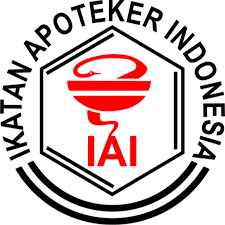Kepatuhan Penggunaan Obat terhadap Profil Lipid dan Lingkar Perut pada Pasien Sindrom Metabolik di Rumah Sakit di Semarang
Farroh Bintang Sabiti(1*), Nur Anna Chalimah Sa’dyah(2), Ayu Pambajeng Puspitaningrum(3)(1) Universitas Islam Sultan Agung Semarang
(2) Universitas Islam Sultan Agung Semarang
(3) Universitas Islam Sultan Agung Semarang
(*) Corresponding Author
Abstract
Metabolic syndrome is a metabolic disorder caused by a complex increase in obesity. Metabolic syndrome can be controlled by adhering to medication and a healthy lifestyle. Patient's behavior towards adherence to medication is carried out in order to achieve the goal of treatment itself. The research objective was to determine the effect of medication adherence on lipid profiles and abdominal circumference in metabolic syndrome (SM) patients at Hospital in Semarang. This research is an observational research. Data were collected using a cross sectional design. Data collection in this study was conducted in August - December 2020. This study used the chi-square test, the chi-square test for abdominal circumference obtained results of 0.254 which said there was no effect of drug adherence with the abdominal circumference value and the chi-square test. for LDL, the results were 0.046 and the results were 0.001 for triglycerides, which is said to have an effect on drug adherence to LDL levels and trglyceride levels. The conclusion in this study is that there is an effect of patient drug use adherence to LDL (Low Density Lipoprotein) and triglyceride levels, while there is no effect of patient drug use adherence to abdominal circumference values.
Keywords
Full Text:
PDFReferences
Agusti, N. I., 2014. Profil Rasio Kolesterol LDL dan HDL Pada Pasien Stroke Di Bagian Saraf RSUD Arifin Achmad Provinsi Riau Periode Januari Sampai Desember 2012. JOM FK No 2, Volume 1, p. 12.
Akrom, Darmawan, E. & Maulida, N., 2017. Faktor-Faktor Berhubungan dengan Kejadian Hiperkreatininemia pada Pasien Berisiko Sindrom Metabolik di Puskesmas Jetis I. Pharmaciana, Volume 7(2), pp. 4-5.
Bantas, K., Yosef, H. K. & Moelyono, B., 2012. Perbedaan Gender pada Kejadian Sindrom Metabolik pada Penduduk Perkotaan di Indonesia. Jurnal Kesehatan Masyarakat Nasional, Volume 7(5), pp. 3-8.
Chen, H. C., 2006. Enhancing Energy and Glucose Metabolism by Disrupting Triglyceride Synthesis: Lessons from Mice Lacking DGAT1. J Nut and Met, pp. 3-10.
Dahlan, M. S., 2014. STATISTIK Untuk Kedokteran Dan Kesehatan. 6 ed. Jakarta: Epidemiologi Indonesia.
Hussar, D. A., 2006. Patient Compliance in Remington: The Science and Practice of Pharmacy. 21st edition ed. Maryland: Editor Genaro, A.Keban, S. A., Purnomo, L. B. & Mustofa, 2013. Evaluasi Hasil Edukasi Farmasis Pada Pasien Diabetes Melitus Tipe 2 Di Rumah Sakit Dr. Sardjito Yogyakarta. Jurnal Ilmu Kefarmasian Indonesia, Volume 11(1).
Kripalani, S. et al., 2018. Validation of the Short Form of the Adherence to Refills and Medications Scale in Iranian Elders with Chronic Disease. Journal of Clinical and Diagnostic Research, Volume XII.
Kripalani, S., Risser, J., Gatti, M. E. & Jacobson, T. A., 2009. Development and Evaluation of the Adherence to Refills and Medication Scale (ARMS) among Low-Literacy Patients with Chronic Disease. International Society for Pharmacoeconomics and Outcomes Research (ISPOR) , Volume 12(I), pp. 118-123.
Magdalena, Mahpolah & Yusuf, A., 2014. Faktor-Faktor Yang Berhubungan Dengan Sindrom Metabolik Pada Penderita Rawat Jalan Di RSUD Ulin Banjarmasin. Jurnal Skala Kesehatan, Volume V No. 2, pp. 1-3.
Mufarokhah, H., Putra, S. T. & Dewi, Y. S., 2016. Self Management Program Meningkatkan Koping, Niat dan Kepatuhan Berobat Pasien PJK. Journal Ners No 1, Volume XI.
PERKENI, 2019. Pedoman Pengelolaan Dislipidemia Di Indonesia 2019. 1nd ed. Jakarta: PB PERKENI.
Putri, S. R. & Isti A, D., 2015. Obesitas sebagai Faktor Resiko Peningkatan Kadar Trigliserida. Majority No 9, Volume IV, p. 2.
Rini, S., 2015. Sindrom Metabolik. J Majority No 4, Volume IV, pp. 1-2.
Sofa, I. M., 2018. Kejadian Obesitas, Obesitas Sentral, dan Kelebihan Lemak Viseral pada Lansia Wanita. p. 229.
Triwinarto, A., Muljati, S. & Jahari, A. B., 2012. Cut-Off Point Indeks Massa Tubuh (IMT) dan Lingkar Perut Sebagai Indikator Risiko Diabetes dan Hipertensi Pada Orang Dewasa Di Indonesia. Penel Gizi Makan No. 35, Volume II, p. 120.
Watuseke, A. E., Polii, H. & Wowor, P. M., 2016. Gambaran kadar lipid trigliserida pada pasien usia produktif di Puskesmas Bahu Kecamatan Malalayang Kota Manado periode November 2014 – Desember 2014. Jurnal e-Biomedik (eBm), Desember, Volume IV, p. 4.
Winarsi, H., Wijayanti, S. P. & Purwanto, A., 2011. Profil Lipid, Peroksidasi Lipid, dan Status Inflamatif Wanita. Jurnal Kesehatan Masyarakat Nasional, Volume 5(5), pp. 2-6.
Yunita, N., Andanalusia, M. & Athiyah, U., 2019. Medication adherence in diabetes mellitus patients at Tanjung Karang Primary Health Care Center, Mataram. Journal of Basic and Clinical Physiology and Pharmacology.
Article Metrics
Abstract view(s): 688 time(s)PDF: 1564 time(s)
Refbacks
- There are currently no refbacks.








